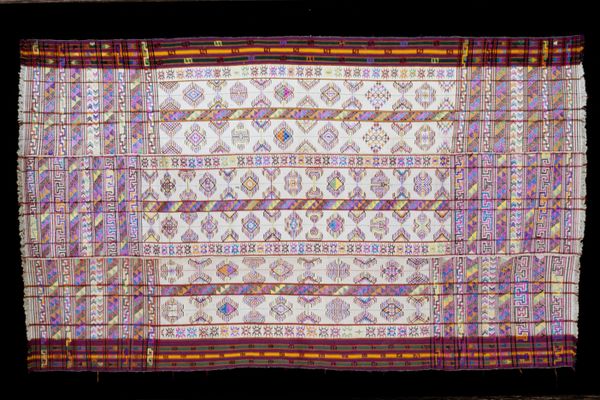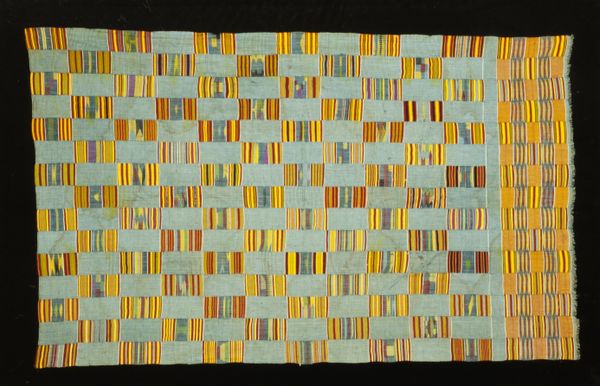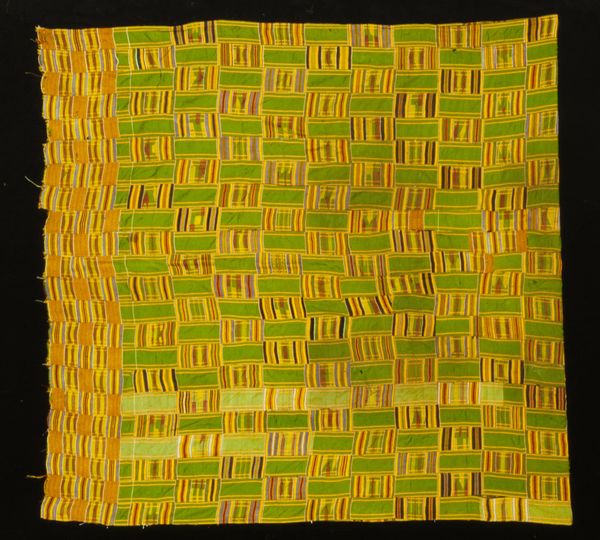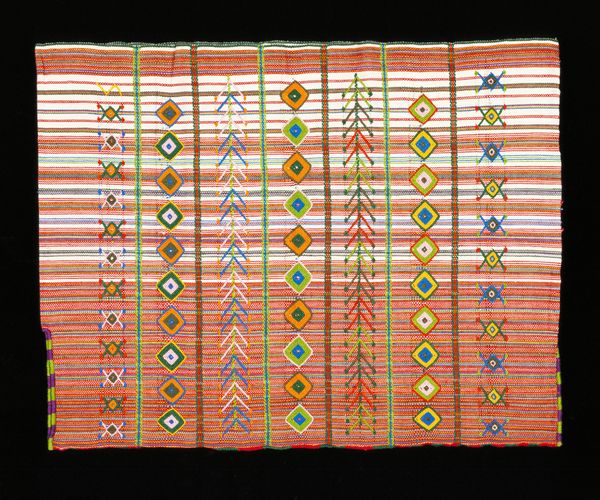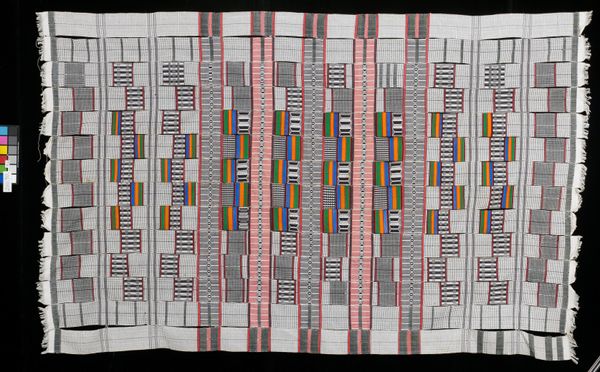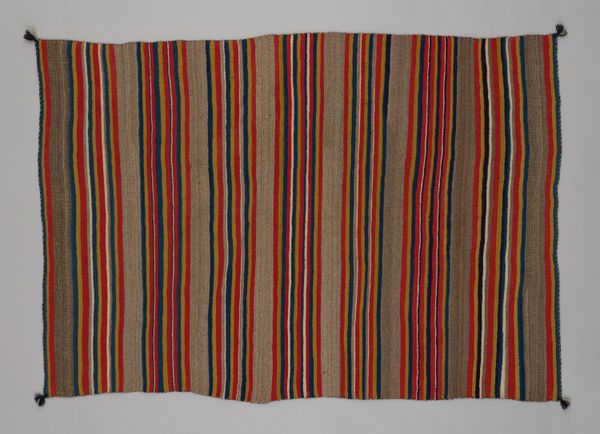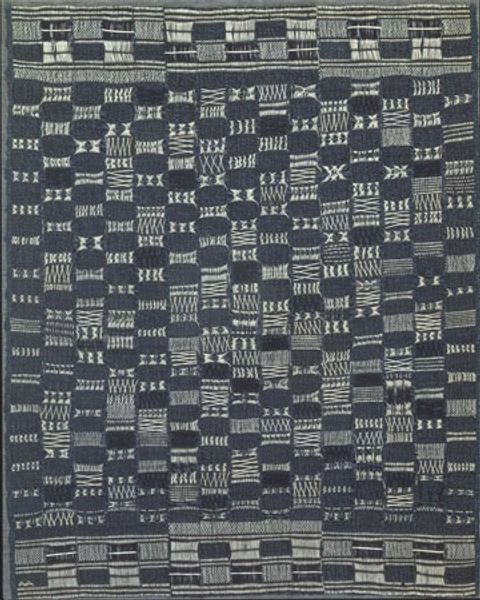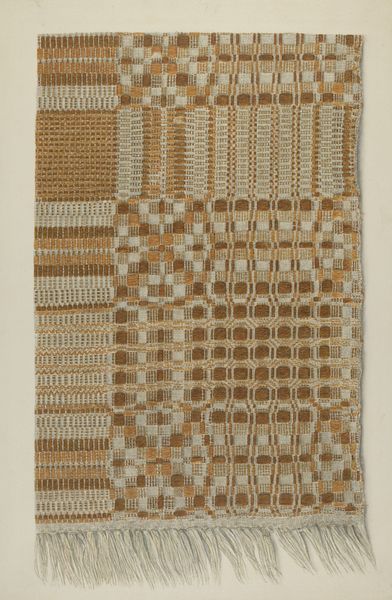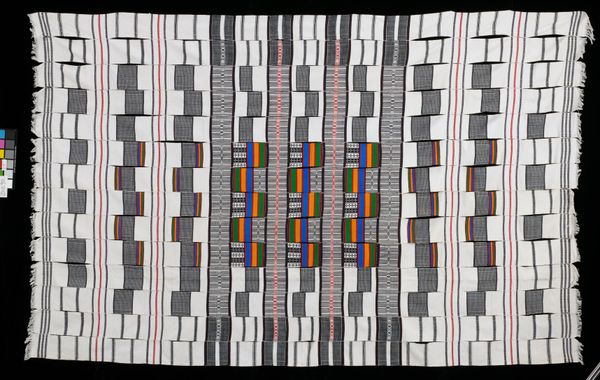
weaving, textile, cotton
#
african-art
#
weaving
#
textile
#
geometric pattern
#
geometric
#
abstraction
#
cotton
Dimensions: 103 1/4 x 70 1/2 in. (262.3 x 179.1 cm)
Copyright: Public Domain
Editor: This “Man’s cloth”, created around the 20th century by an anonymous artist, and residing here at the Minneapolis Institute of Art, presents a striking geometric pattern using cotton textiles. The meticulous weaving feels almost mathematical. What can you tell me about the materiality and process behind a work like this? Curator: This cloth, composed of woven cotton, forces us to consider the means of its production. The act of weaving, historically associated with domestic craft, challenges the conventional separation of ‘high’ art and the everyday object. Editor: So you're saying the labor is central to understanding it? Curator: Absolutely. Think of the process – the sourcing of the cotton, the dyeing, the actual weaving itself. The creation isn't solely an individual artistic expression, but is deeply embedded in social and economic systems. Editor: That's interesting. It looks very repetitive; does the pattern itself have any significance beyond aesthetics? Curator: It could. But what is striking is the textile itself. What does its very being signal? This cloth's survival becomes evidence of a material culture—weaving practices, trade networks, and potentially the ritual or social role it played in its original community. It is an extraordinary act to preserve this practice. How has this weaving challenged your assumptions about art? Editor: I guess I always focused on the final image, not so much on the steps needed to make it a reality. Curator: Precisely. A materialist approach reveals the complex layers of production and consumption intertwined within the aesthetic object. Editor: It really reframes the way I see the finished piece. It’s more than just a pretty pattern, but a result of tangible efforts. Thank you.
Comments
No comments
Be the first to comment and join the conversation on the ultimate creative platform.
